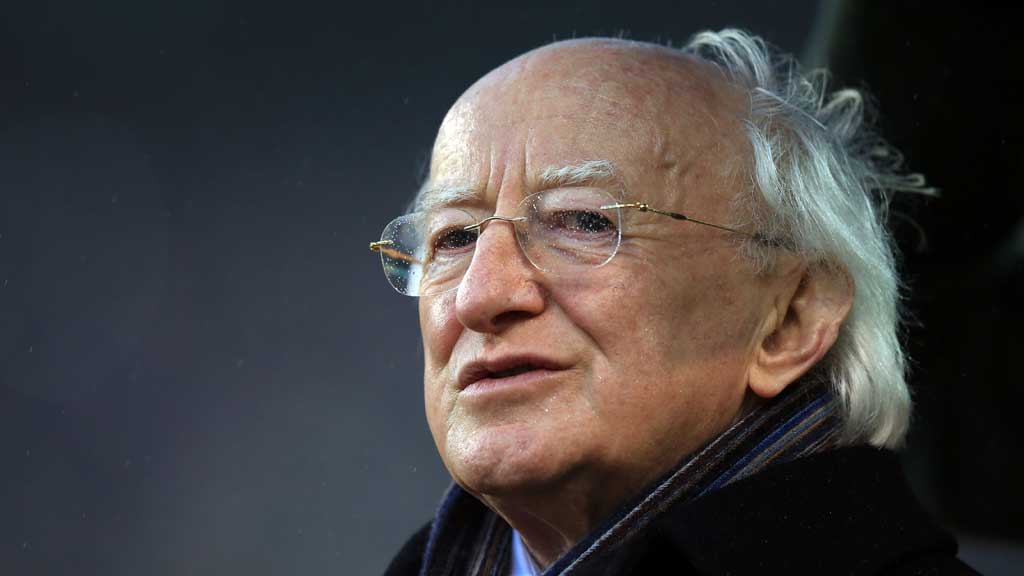Why Ireland will be watching as president meets Queen
Irish President Michael D Higgins begins a four-day state visit to the UK on Tuesday. Vinnie O’Dowd says it shows us how far Anglo-Irish relations have come.

When the Queen visited Ireland three years ago, many Irish stood on the capital’s streets corners and got a thrill if they caught a glimpse of her hefty Land Rover – and that was it. It was an occassion mostly partaken by the establishment, for the establishment, writes Channel 4 News producer Vinnie O’Dowd.
Mary McAleese, the Irish president at the time, described her visit as a “new future, a future very, very different from the past, on very different terms from the past”.
Tuesday marks the return leg. President Michael D Higgins, the 72-year-old statesman – who writes poetry, debates as fluently as Gaeilge (in Irish) as in English, and extends an ungloved hand to anyone who approaches – is one of Ireland’s finest politicians.
This is all part of the building of relationships between the two countries and people on both sides of the divide. Enda Kenny, Taoiseach
The visit will be followed closely by the Irish in Britain and by the Irish at home. For the politicos, the visit is the Johnny Wilkinson drop goal of 2003 in the world of Anglo-Irish relations. It’s a winner. The Taoiseach Enda Kenny told the BBC: “This is all part of the building of relationships between the two countries and peoples on both sides of a divide.” Republicans in Belfast will jest that “Marty’s havin’ tea with The Queen”.
However for most, the real edifying moment between the two cultures came in February 2007. Two national teams stood tete-a-tete in Croke Park, the home of Gaelic football. Over 80,000 people stood to attention as God Save The Queen came billowing out of chests of the English faithful and their men in white on the pitch.
This moment remembered the massacre of 14 civilians that the British Army had gunned down while attending a gaelic football match in 1920, but crucially, it looked forward.
As the Irish tricolour flew proudly amid the melody of the British national anthem, many Irish people saw signs of a new relationship with the English. They saw the potential for an atavistic hate become something else – a future of mutual respect and equality.
For decades, many Irish in the UK felt as the outsiders, the terrorists. One man in Brixton told me: “I could not be English where I grew up or Irish at home, and Ireland is home for me. But I was always an outsider as a child while back in Dublin during the summer holidays – simply because of my English accent.”
In search of opportunity
Irish people nevertheless did thrive in British society. John Griffin, founder and chairman of Addison Lee taxi company, which has a turnover of £250m a year, was brought up in Ireland until the age of nine and says he “went to school with no shoes on”.
His family came to England in search of opportunity. He won the Irish Post’s inaugural award for business person of the year in 2013.
Irish see themselves as contributing a lot to British society. Terry Wogan, Graham Norton, and Channel 4 News’s Jonathan Miller and Paraic O’Brien are but a few.
Strengthening relationship
I’ve been challenged on the Irishness of Wilde, Shaw and Beckett many a time in my 13 months living in London. The answer I have now cultivated is: “Can’t we share them?”
Siobhan Breatnach, editor of the London-based Irish Post, told Channel 4 News: “The recent reception at Buckingham Palace, hosted by the Queen and attended by over 300 Irish people, is not something the community – particularly those of a certain generation – would ever have imagined taking place, and in many ways its success signifies how the British-Irish relationship has grown and strengthened in recent times.”
There is something earthy about this presidential visit that means a lot to the Irish community in Britain. Mickey D, Marty McG and An Taoiseach Enda Kenny, all havin a cupán tae with the Queen. Times have changed.
-
Latest news
-
Police try to shut down right-wing event as Nigel Farage speaks3m

-
‘Many things Netanyahu has done I disagree with, but I’m not giving up on Israel’, says top-ranking Democrat4m

-
Could US House be about to vote on Israel, Ukraine aid bill?2m

-
Number of people out of work due to long-term sickness at record high3m

-
Creating deepfake porn to be made a criminal offence after C4 investigation6m

-




